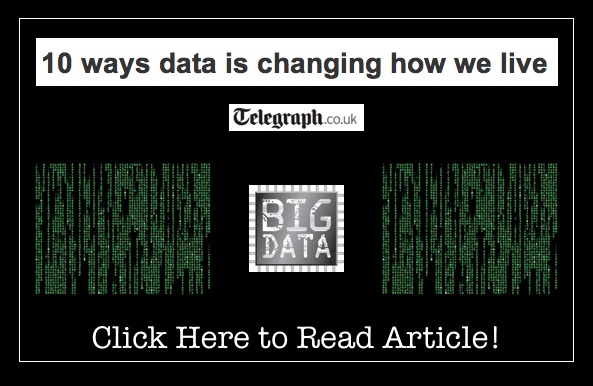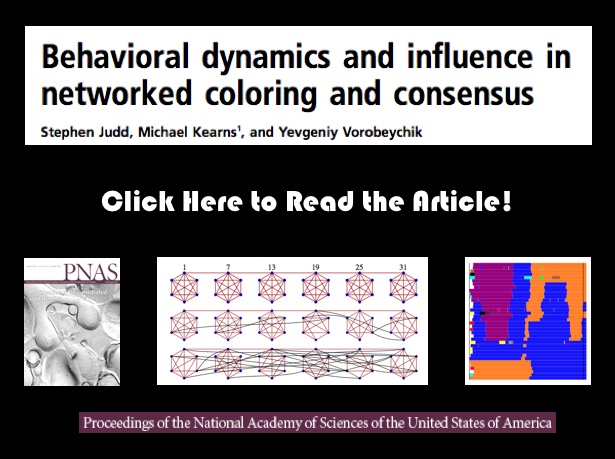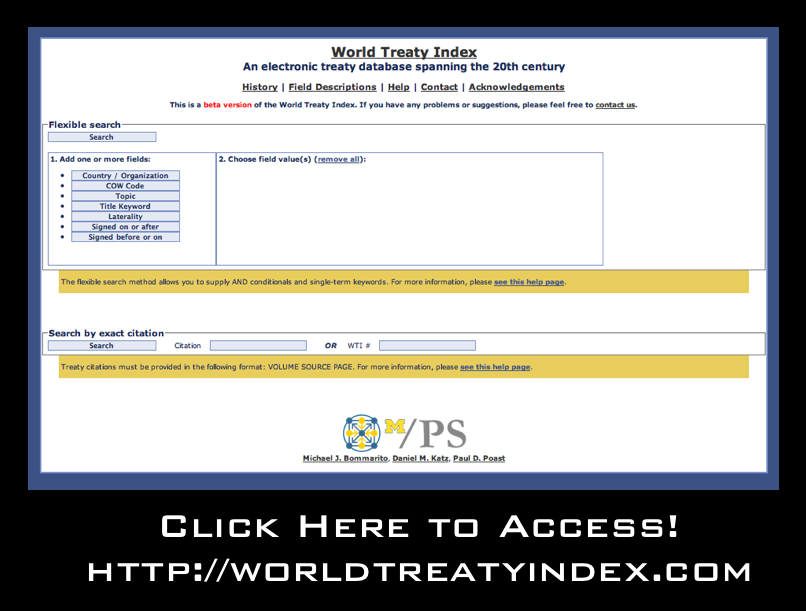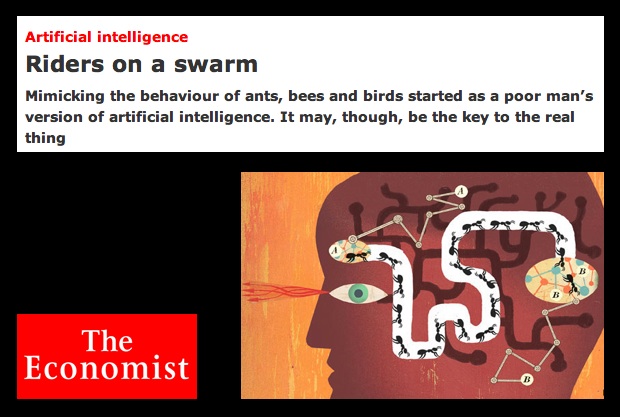[HT: Paul Kedrosky & Tim O’Riley ]
Month: August 2010
Recorded Future – A Temporal Analytics Engine
The Recorded Future Temporal Analytics Engine relies upon three steps to serve up information:
1. Scour the web: We continually scan thousands of news publications, blogs, niche sources, trade publications, government web sites, financial databases and more.
2. Extract, rank and organize: We extract information from text including entities, events, and the time that these events occur. We also measure momentum for each item in our index, as well as sentiment.
3. Make it accessible and useful: You can explore the past, present and predicted future of almost anything. Powerful visualization tools allow you to quickly see temporal patterns, or link networks of related information.
David McCandless: The Beauty of Data Visualization [TED]
From the talk abstract: “David McCandless turns complex data sets (like worldwide military spending, media buzz, Facebook status updates) into beautiful, simple diagrams that tease out unseen patterns and connections. Good design, he suggests, is the best way to navigate information glut — and it may just change the way we see the world.”
Announcing the Beta Prerelease of the New Electronic World Treaty Index
What is the World Treaty Index?
The World Treaty Index (WTI), originally compiled by Peter Rohn in the 1960s and 1970s and subsequently maintained and updated at the University of Washington, is a comprehensive list of all known treaties formed during the twentieth century. This includes not only treaties formally registered with the United Nations (UNTS) but a significant number of unregistered agreements.
What information does the World Treaty Index provide?
The WTI provides information on the parties to the agreement, the general topic of the agreement (e.g. trade agreement, tax agreement, an arms control agreement, etc.), as well as the signing date and the date in force, and the volume and page containing the text of the agreement. Though the WTI does not provide the full text of each agreement, it is an excellent resource for identifying when a state (or states) formed a number of international agreements of a particular type. With a list of relevant agreements (including their volume and page number), an end user interested in obtaining the full text can simply collect them using the primary source material (i.e. UNTS, LTS, etc.)
Who is currently administrating the World Treaty Index?
The Electronic WTI is now housed at the University of Michigan and administrated by Michael Bommarito, Daniel Martin Katz and Paul Poast. We are highlighting the newly constructedBeta Prerelease of the WTI website in an effort to obtain feedback prior to the official release. The currently available product provides access to information on more than 58,000bilateral and multilateral treaties formed between 1900 and 1997. When full coverage for the 20th century is complete, the database should feature in excess of 70,000 agreements.
What are some examples of searches I can conduct on the World Treaty Index website?
While the WTI should support all browsers, we suggest using Firefox. Below are three sample searches.
Search #1: Suppose a user would like to collect all agreements involving Brazil. Use the “flexible search” and follow three easy steps. (A) Select the country/organization field (B) within the country/organization field set the field value = Brazil (C) click the search button.
Search #2: Suppose a user would like to collect all agreements between Mexico and Spain. Use the “flexible search” and follow five easy steps. (A) Select the country/organization field (B) within the country/organization field set the field value = Mexico (C) Select a second country/organization field (B) within this new country/organization field set the field value = Spain (E) now click the search button.
Search #3: Suppose a user would like to know how many extradition agreements France signed between 1950 and 1962. This is similar to the examples above but involves the topic, signed on or after and signed before or on fields. After the user chooses the proper search fields and selects the search information, the WTI will produce on the screen a list of the desired agreements and provide the option of downloading the list as a CSV file.
When will it feature full coverage for the entire 20th Century?
By the end of 2010, we will add (1) all bilateral treaties formed between 1900 and 1944 [Now Mostly Done] (2) all bilateral treaties formed between 1998 and 1999, and (3) all multilateral agreements and a list of all parties to each multilateral agreement. If you know of an agreement that is not ultimately featured on the site please contact us and we will be happy to add it to the list.
How can I learn more about the World Treaty Index?
For a general history of the World Treaty Index, visit the “History Page” on the worldtreatyindex.com website. For a more detailed treatment please see: Glenda Pearson, Rohn’s World Treaty Index: Its Past and Future, 29 International Journal of Legal Information 543 (2001).
What additional extensions of the Electronic World Treaty Index are planned?
As noted above, our initial goal is provide complete coverage of all known agreements in the 20th Century. Planned extensions include bringing the World Treaty forward so as to provide coverage up to 2010. In addition, we plan to collect information regarding treaty terminations. Finally, we would like to enhance the granularity of our topic codes and allow for agreements with multiple dimensions to feature multiple topic codes.
Feedback?
At this point, we have only offered a beta pre-release of the site. Thus, we would really appreciate your feedback, etc. Please email us at worldtreatyindex@gmail.com if you have any thoughts about how to improve the site.
Riders on a Swarm — Might Mimicking the Behavior of Ants, Bees & Birds Be the Key to Artificial Intelligence?
This week’s issue of the Economist has an interesting article entitled Riders on a Swarm. Among other things, the article discusses how attempts to computationally model ant, bee and bird behavior have offered insight into major problems in artificial intelligence.
For those not familiar, the examples discussed within the article are classic models in the science of complex systems. For example, here is the Netlogo implementation of bird flocking. It will run in your browser but requires Java 4.1 or higher. If you decide to take a look — please click setup – then go to make the model run. Once inside the Netlogo GUI, you can explore how various parameter configurations impact the model’s outcomes.
One of the major insights of the bird flocking model is how random starting conditions and local behavioral rules can lead to the emergence of observed behavioral patterns that appear (at least on first glance) to be orchestrated by some sort of top down command structure.
This is, of course, not the case. The model is bottom up and not top down. Both the simplicity and the bottom up flavor of the model are apparent when you explore the model’s code. For those interested, I will take a second and plug the slides from my ICPSR class. In the class, I dedicated about an hour of class time to bird flocking model. Click here for the slides. In the slides, I walk through some of the important features of the code (discussion starts on slide 16).
P ≠ NP Proof — Is there a fatal flaw?
For those who are interested in the current state of the potential P ≠ NP proof, Michael Nielsen is collecting various sources on a wiki. This includes the current version of the paper, a summary of the proof as well as arguments regarding flaws in the paper. Anyway, for more click here or on the image above.
The Architecture of the Brain — Network or Hierarchy ? [BBC News & PNAS ]
This week in the Proceedings of the National Academy of Sciences comes a very important article entitled Hypothesis-driven structural connectivity analysis supports network over hierarchical model of brain architecture by Richard H. Thompson and Larry W. Swanson of the University of Southern California. Above is the BBC coverage regarding the paper. Here is the press release from USC. Here is the story from Science Daily. This article is worth the read!
P ≠ NP ? [ Vinay Deolalikar from HP Labs Publishes His Proof to the Web, $1Million Clay Institute Prize May Very Well Await ]
UPDATED VERSION HAS BEEN PUBLISHED TO THE WEB (August 9, 2010) [Click Here!]
After sending his paper to several leading researchers in the field and acquiring support, Vinay Deolalikar from HP Labs has recently published P ≠ NP to the web. While it has yet to be externally verified by folks such as the Clay Mathematics Institute, it looks very promising. Indeed, this very well represent a Millennium Prize for Mr. Deolalikar. For those interested in additional information, check out Greg Baker’s blog (which broke the story). Very exciting!
For initial thoughts on the matter by Dick Lipton, see the latest post on the blog Gödel’s Lost Letter and P=NP.
To read more about the history and importance of P vs. NP, please consult these sources:
- P versus NP Problem (Wikipedia)
- Stephen Cook, The P versus NP Problem
- Madhu Sudan, The P versus NP Problem
- Lance Fortnow, The Status of the P versus NP Problem
- Stephen Cook, The Importance of the P versus NP Question
Scott Page on Leveraging Diversity
Diversity is one the major topics of interest here at Michigan Center for the Study of Complex Systems. This includes diversity as experienced in physical as well as in social systems. On this topic, here is a lecture that one of my dissertation advisors, Scott Page gave earlier this year at the Darden School of Business at Virginia. This lecture is related to his book about the power of diversity entitled: The Difference: How The Power of Diversity Creates Better Groups, Firms, Schools, and Societies. Although I realize it is roughly a 90 minute talk, I believe that you will find that it is well worth the time!
Matt Ridley: When Ideas Have Sex [ TED 2010 ]
“At TEDGlobal 2010, author Matt Ridley shows how, throughout history, the engine of human progress has been the meeting and mating of ideas to make new ideas. It’s not important how clever individuals are, he says; what really matters is how smart the collective brain is.”










